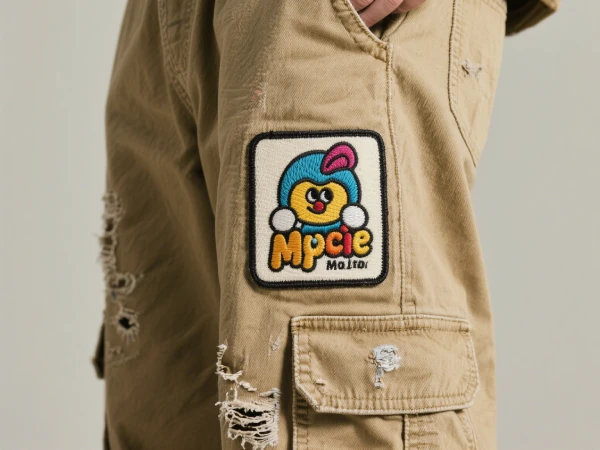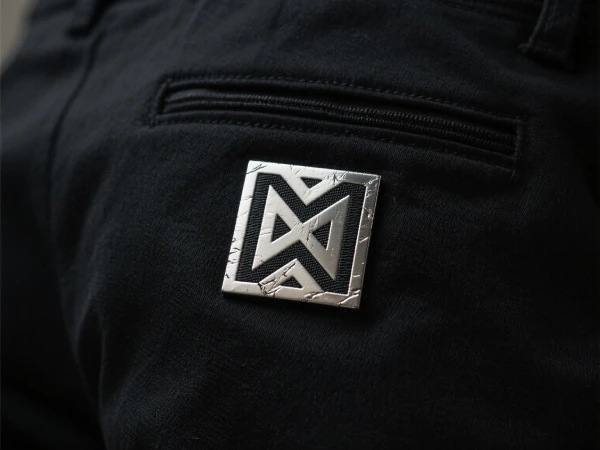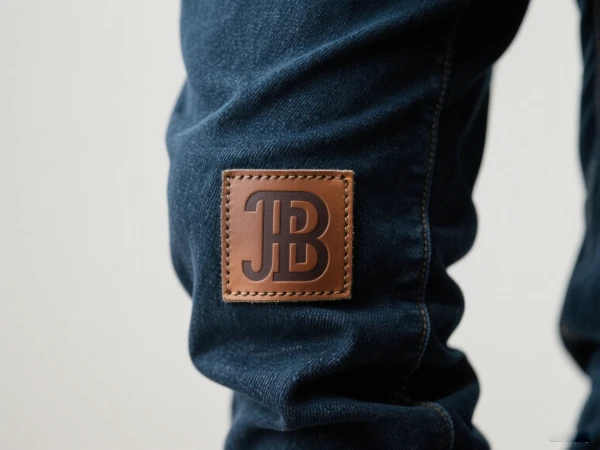سواء كنت تقوم بترقيع الجينز المفضل لديك، أو إصلاح تمزق في بنطال العمل الخاص بك، أو إضافة لمسة زخرفية إلى زوج من سراويل الشحن، رقعة بنطال حل بسيط وفعال وبأسعار معقولة. من العملي إلى التخصيص، تُضفي رقع السراويل حياة جديدة على الملابس البالية، وتُضفي لمسة إبداعية على محبي الموضة.
في منشور المدونة هذا، سنستكشف الأنواع المختلفة من رقع السراويل، وكيفية اختيار الرقع المناسبة، ونصائح التطبيق خطوة بخطوة، ولماذا أصبحت أداة أساسية للإصلاح والتصميم.

لماذا استخدام رقعة البنطلون؟
قبل رمي بنطالك التالف في سلة المهملات أو التوجه إلى خياط لإصلاحه بتكلفة باهظة، فكر في هذا: رقعة بنطال يمكن أن يوفر لك الوقت والمال والموارد. إليك بعض الأسباب التي تدفع الناس لاختيار الرقع البرمجية:
- إصلاح فعال من حيث التكلفة:تعتبر عملية الترقيع أرخص بكثير من استبدال ملابسك أو تعديلها بشكل احترافي.
- صديق للبيئة:يساعد إصلاح الملابس على تقليل النفايات النسيجية، مما يجعلها خيارًا مستدامًا.
- التعبير الشخصي:استخدم رقعة لإضافة لمسة جمالية أو إنشاء مظهر فريد وشخصي.
- متانة:جودة عالية رقع إصلاح الأقمشة يمكن أن يعزز نقاط الضعف ويطيل عمر بنطالك.
سواء كنت تقوم بإصلاح ملابس الأطفال أو معدات الرحلات أو الجينز العصري، فإن الرقعة الصحيحة يمكن أن تحدث فرقًا كبيرًا.
أنواع رقع السراويل
هناك أنواع متعددة من رقع السراويل، كل منها مناسب لمواد محددة، وأنواع الضرر، والتفضيلات الشخصية.
1. رقعة كي على البنطلون
أن رقعة كي على البنطلون يحتوي على لاصق يتم تنشيطه بالحرارة على الظهر، مما يسمح لك بتطبيقه بسهولة باستخدام مكواة منزلية.
الايجابيات:
- سريع وسهل الاستخدام
- لا يتطلب مهارات الخياطة
- ممتاز للتمزقات الصغيرة والمتوسطة
السلبيات:
- قد يضعف الالتصاق بعد غسلات متعددة
- غير مناسب للأقمشة القابلة للتمدد للغاية
2. رقعة خياطة
يتطلب هذا النوع إبرة وخيطًا ولكنه يقدم نتائج قوية وطويلة الأمد.
الايجابيات:
- ثبات أقوى من الرقع اللاصقة
- مناسب للمناطق ذات الضغط العالي مثل الركبتين والمقعد
- يمكن أن تكون مزخرفة بتصاميم مطرزة
السلبيات:
- يتطلب مهارات الخياطة الأساسية
- يستغرق وقتا أطول للتطبيق
3. رقعة إصلاح القماش
هذه رقع متعددة الاستخدامات مصنوعة من الدنيم، أو القطن، أو القماش، أو المواد الاصطناعية، ويمكن كيّها أو خياطتها. وهي مثالية للدمج مع خامة البنطال الأصلية.

اختيار الرقعة المناسبة لسروالك
عند اختيار رقعة بنطال، ضع في اعتبارك ما يلي:
- مادةنسّق قماش الرقعة مع بنطالك لضمان المتانة والمظهر الأنيق. رقعة الدنيم مناسبة للجينز، والقماش لملابس العمل، والقماش المرن للسراويل الضيقة.
- اللون والتصميم:اختر رقعة تمتزج بسلاسة أو تتناقض عمدًا للحصول على مظهر أنيق.
- الحجم والشكلتأكد من أن حجمها كافٍ لتغطية الضرر مع توفير مساحة إضافية لتثبيت الحواف. الرقع البيضاوية أو المستطيلة مناسبة للتمزقات، بينما الأشكال المبهجة مناسبة للأغراض الزخرفية.
كيفية وضع رقعة على البنطال: دليل خطوة بخطوة
لرقعة الكي على السراويل:
- نظف المنطقة:اغسل البنطال وجففه لإزالة أي أوساخ أو زيوت قد تؤثر على الالتصاق.
- قص الخيوط السائبة:قم بقص الحواف المتهدلة حول الفتحة.
- وضع التصحيح:ضعها فوق المنطقة التالفة مع توجيه الجانب اللاصق لأسفل.
- غطها بقطعة قماش:استخدم قطعة قماش قطنية رقيقة أو منشفة فوق الرقعة لحمايتها من الحرارة المباشرة.
- تطبيق الحرارةاضغطي على مكواة ساخنة بقوة لمدة ٣٠-٤٥ ثانية. اتركيها لتبرد لمدة دقيقة.
- التحقق من الالتصاق:إذا لزم الأمر، قم بإعادة تسخين الحواف لتثبيتها بشكل أفضل.
للرقع القابلة للخياطة:
- دبوس أو لصق في مكانه:استخدمي دبابيس أو غراء القماش لتثبيت الرقعة قبل الخياطة.
- خياطة بشكل آمن:استخدم غرزة مستقيمة أو متعرجة حول الحواف، مع التأكد من التعزيز المحكم.
- تعزيز إذا لزم الأمر:بالنسبة للمناطق التي تتعرض للضغط (الركبتين، والفخذين الداخليين)، فكر في الخياطة المزدوجة.

طرق مبتكرة لاستخدام رقعة البنطلون
إلى جانب الإصلاحات، تكتسب الرقع شعبيةً متزايدةً في أزياء الشارع، وأزياء "اصنعها بنفسك"، وحتى إطلالات عروض الأزياء. إليكِ كيفية الإبداع:
- إضافة رقع إلى السراويل غير التالفة:أظهر شخصيتك من خلال وضع بقع على الجيوب، أو الفخذين، أو الأكمام.
- خلق التباين:استخدمي رقع إصلاح من القماش بألوان زاهية أو بنقوش مختلفة لتحويل الثقوب إلى إضاءات.
- امزج وطابق:قم بدمج عدة رقع للحصول على مظهر جمالي قوي ومتعدد الطبقات.
نصائح الصيانة بعد التصحيح
- اغسل البنطلونات المرقعة بالماء البارد للحفاظ على المواد اللاصقة.
- اقلب البنطال من الداخل إلى الخارج قبل غسله في الغسالة.
- تجنب التجفيف بالحرارة العالية إذا كنت تستخدم رقعة المكواة.
- قم بإعادة خياطة أي حواف رافعة بمرور الوقت للحفاظ على الرقعة آمنة.

الأفكار النهائية
أ رقعة بنطال أداة صغيرة ذات تأثير كبير. سواء كنت تستخدم رقعة كي على البنطلون للحصول على حل سريع أو رقعة إصلاح القماش لتعزيز مظهرك على المدى الطويل، فإن ترقيع بنطالك هو طريقة عملية وإبداعية لتوفير المال وتقليل النفايات والارتقاء بأسلوبك.
في المرة القادمة التي تلاحظ فيها تمزقًا أو تريد إضافة بعض البهجة إلى بنطال عادي، تجنب الذهاب إلى المتجر واحصل على رقعة صغيرة - فقد تجد أن رقعة صغيرة تؤدي إلى مظهر جديد تمامًا.



